I pride myself on being outdoorsy. I’m more at home in the mountains, than I am in a large city. But in a matter of minutes, I learned from our San (bushman) guide Elvis, that I would not survive the Namibian bush by myself for very long.
The first rule to surviving in the Namibian bush is to know what can kill you. And I’m not talking about lions, cheetahs, or hyenas – although those are certainly out there. Perhaps even more dangerous are…. trees. Yep trees!

Three types of trees in the Namibia bush that are dangerous and can even kill you!
If you burn the wood of the Tamboti tree to make a fire, it becomes toxic and you may find yourself blind. Your fate will be sealed even more quickly should you come into contact with some sap from the Lily Impala, which causes deadly blood clots in a matter of minutes. No wonder the San use the sap on the tip of their arrows! Eating just a little bit of the Arub tree will also cause death. Fortunately you can survive if you receive medical care in time.
Next assuming that a lion or poisonous tree hasn’t finished you off, you need to know what to eat – you don’t want to die of starvation.
Sour plums can be eaten or more commonly are used to make juice. If you eat them raw you will find they are called sour for a reason – but hey it’s food and it’s not toxic.
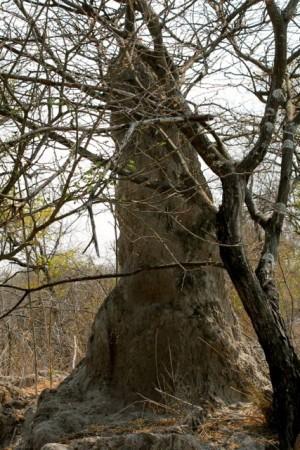
A termite mound provides two food sources.
Next, you can look for a termite mound. There are two sources of food here, the termites themselves – although catching them is quite the art and the mushrooms that grow on the termite mounds.
Perhaps being in the bush for a wild you are craving meat, which Namibians love to eat. Fortunately there is a lot of it in the bush. Unfortunately it is not so easy to catch. You have a couple of options.
You can build a trap to catch a guinea fowl, which I’ve provided a step by step guide. Your second option is to build a trap that can be used to catch kudu or a zebra. In order to do this, you need to build a big enough hole to hold a kudu or zebra. You will also want to cover a few sharp branches with the sap from the Lily Impala to finish the animal off. Next you will want to cover it with leaves. And you wait….
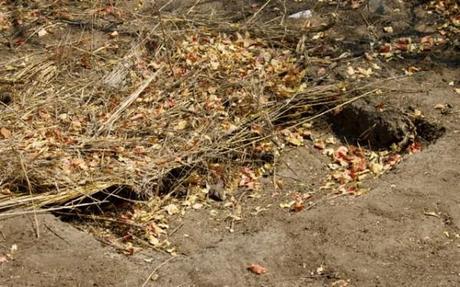
Simulated animal trap – not actual size for safety and legal reasons.
The only problem with this option is that it’s illegal in Namibia since in addition to being dangerous for animals, it’s also dangerous for people so you will be breaking the law. Hey, no one said that surviving in the Namibian bush would be easy.
You will also need to learn a new language to survive in the bush. I’m not talking about one of the tribal languages, but that of learning to read animal tracks. Pop quiz: Which animals to the prints in the top left and top right photo belong to?
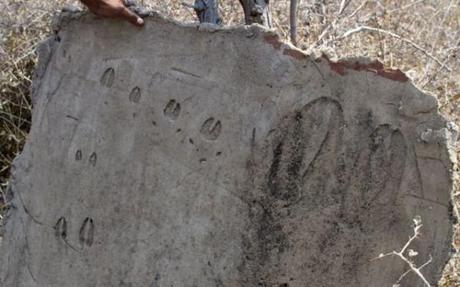
Animal tracks in the Namibian bush. Can you identify them?
If you answered warthog and giraffe you are correct. If not, well, your Namibian bush survival skills need some work – otherwise you might find that you have inadvertently lead yourself straight into the clutches of a predator. You also need to be able to tell how old the prints are. There’s no point in tracking impala prints that are a couple of days old – they will be long gone. You will also want to avoid following the tracks of another hunter who is obviously tracking an animal, since should you end up killing his animal, he has the right to kill you on the spot for stealing his kill.
Like I said, life in the Namibian bush can be brutal.
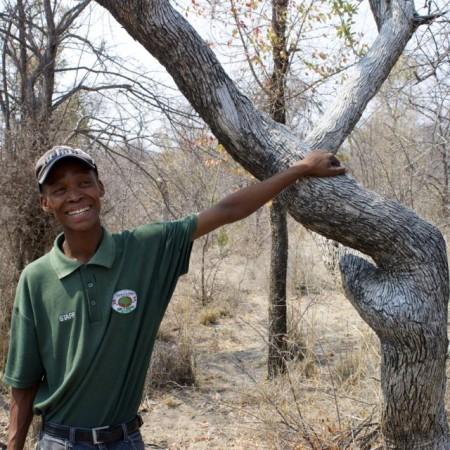
The wood from a Leedwood tree is a great source of firewood.
You will also want to keep your eyes open for the Leedwood tree since it’s wood is perfect for barbecuing your recent catches – assuming that you have been successful that is and that your fire making skills are up to par. Mine sadly are not.
Should you find yourself feeling unwell in the bush, a cure is never far away. Cure a fever by boiling the leaves of the Leedwood tree. A remedy the San still use today.
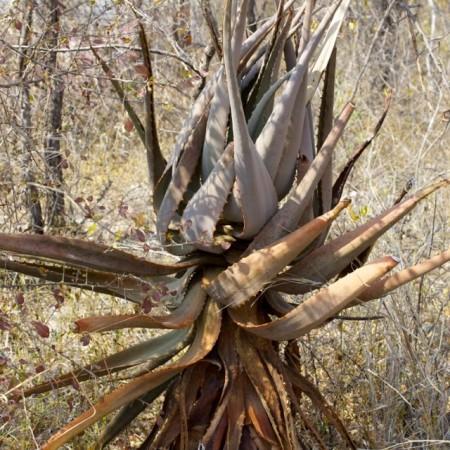
An aloe vera plant can be used to treat cuts and cure stomach woes.
For stomach woes, the Aloe Vera plant can help clean out your stomach when mixed with water. Warning: it acts as a diuretic so be prepared for its consequences. Elvis highly recommends not using it more than once a day!

Step by step guide to how to make rope from wild onion.
Finally, you may find yourself in need of some rope. No worries if you forgot it at home. You can make your own in the bush. Find some wild onion, pound it, rub it, whack it a few times, then roll it on your legs, which also has the added benefit of shaving your legs at the same time. The results of your labor should look like the ones pictured above.
So what do you think? Could you survive in the Namibian bush? I learned, that sadly I could not.
A love of hiking, mountains, and cheetahs, does not a bushgirl make!
Learn From a Real San (Bushman) How to Survive in the Namibian Bush:
- Learn more about how to be a Namibian San on a bushwalk at Treesleeper Camp, located near the village of Tsintsabis.
- A ~ 2 hour walk costs 110 Namibian $ (~€8 or $10 USD)
- It’s a sustainable, community tourism initiative.
- Village tours and cultural performance are also available.
- Advance reservations are required. Book at least two days (or earlier) in advance. This can be done through their website.

